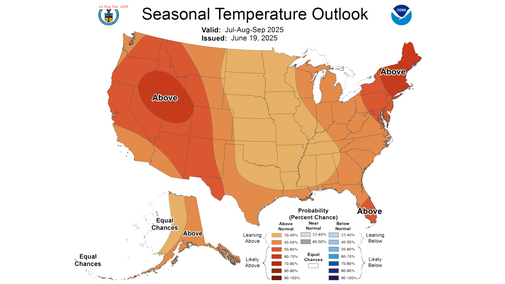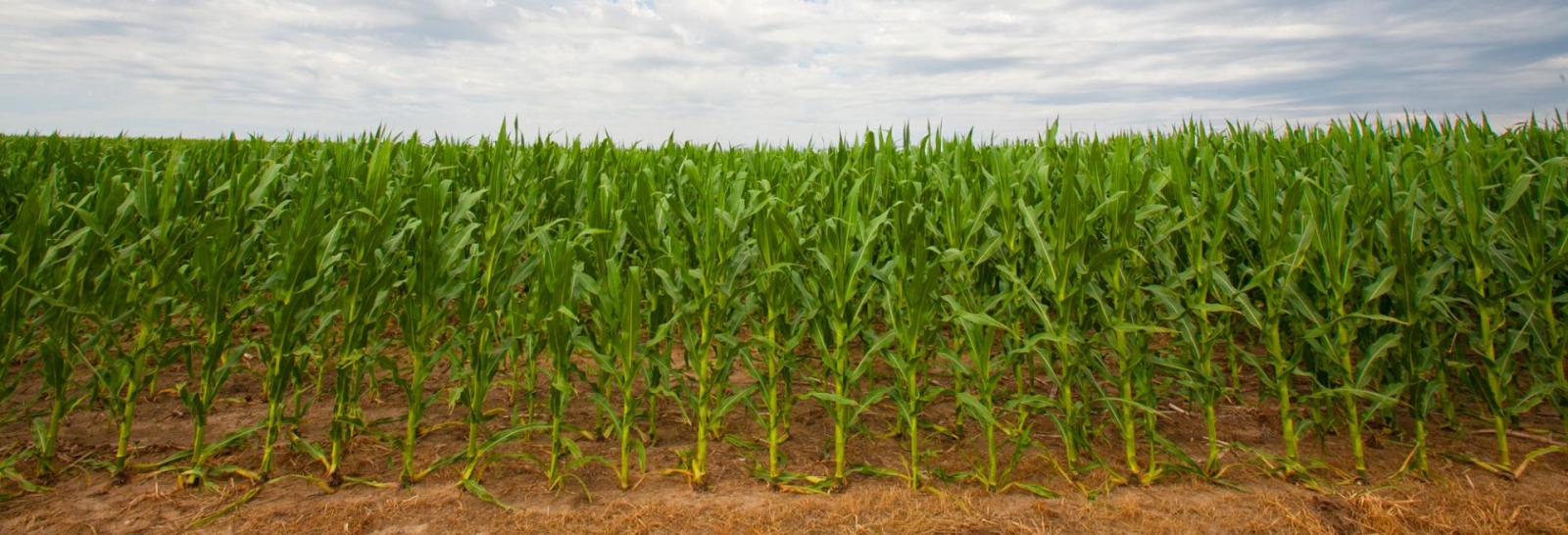Severe Storms and Flash Flood Potential
A shortwave is currently moving into the High Plains region, which helped initiate showers and thunderstorms across a good portion of the state starting Thursday afternoon in the southern Panhandle, west-central Nebraska and the northern section of the state east of Valentine. This should yield some moisture for most everyone in central and eastern Nebraska. But as has been the case most of this summer, the amounts will not be equitable. Some areas, particularly around Highway 20 in northeastern Nebraska, will have flash flooding risk. Higher winds and hail also are possible overnight and cannot rule out a tornado in the early evening hours particularly north of Highway 30 and east of Highway 183. SPC currently has a slight risk out for much of the eastern half of the state today.
Additional chances of severe weather exist across southeast Nebraska into Illinois Friday afternoon, July 11, with chances for another line of storms moving southeast across the state on Friday night along the cold front. Temperatures Friday will be highly dependent on cloud cover and outflow boundaries from storms tonight. Highs in the 80s are likely statewide with temperatures getting over 90°F certainly possible in southern and eastern sections of the state if there is enough clearing. Temperatures will be cooler in the Panhandle. But temperatures getting above 90°F would increase the risk of thunderstorms in the afternoon hours. All in all, most of the state outside the northern Panhandle has a shot at getting useful moisture in the next 36-48 hours.
Pleasant Saturday
After the frontal passage, we will enjoy a brief break from the warmer temperatures with highs in the lower 80s for most of us on Saturday, July 12 and temperatures dropping into the upper 50s and low 60s on Sunday morning. Clouds may linger for part of the morning in eastern Nebraska, but full sunshine should be the rule by afternoon for everyone. All in all, the weather looks very nice for outdoor activities on Saturday and Saturday evening, especially with a gentle breeze expected.
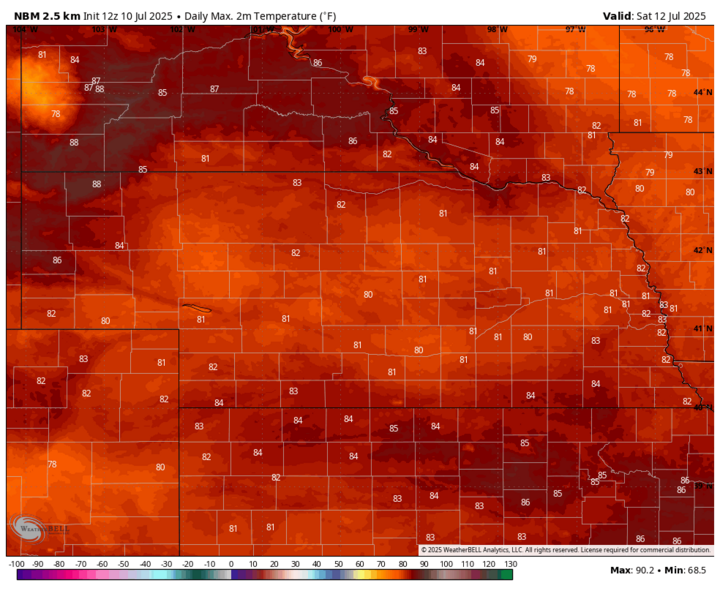
Brief Return to Heat
Ridging will briefly become prominent again across the north-central U.S. early next week. By Monday afternoon, July 14, there looks to be a very warm nose of air at 850-mb spreading east across the Dakotas and into Nebraska. This will translate to a hot day statewide with air temperatures well into the 90s in western Nebraska, possibly approaching 100°F near Chadron. Central and eastern Nebraska will be southeast of the warmest air at 850-mb (~5200 feet above sea level) and with low-level southerly flow helping to increase dewpoints, temperatures should stay below the mid-90s. But with dewpoints likely getting into the 70s, the heat index may exceed 100°F at times in the eastern portion of the state.
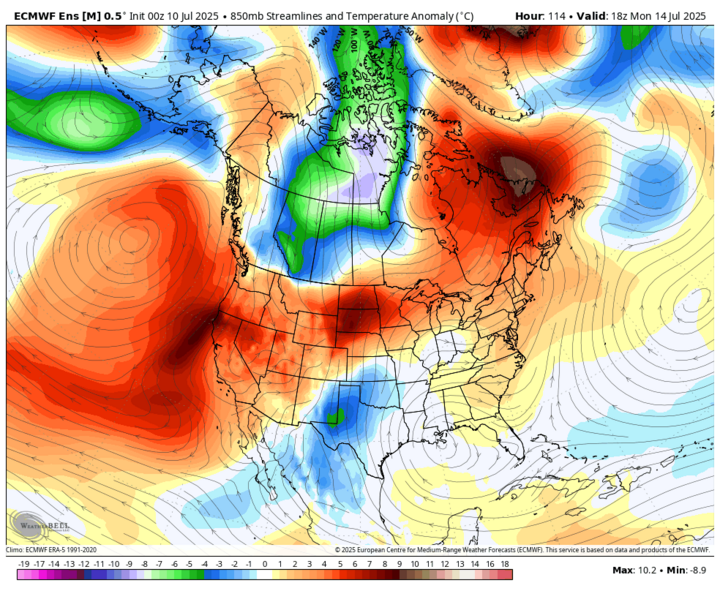
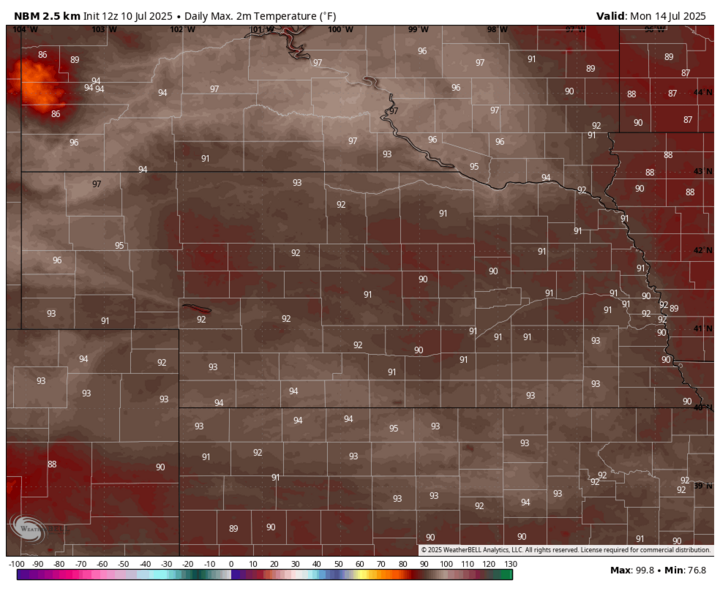
Rain Chances and Cooler Temperatures
By Tuesday afternoon, July 15, a sharper trough at 500-mb will be coming out of Canada into the north-central U.S. and at the surface, a seasonally strong cold front will be moving through the state. This will bring down temperatures quite a bit for the northwestern a quarter to third of the state while seasonal temperatures prevail ahead of the front. This also may be a slower-moving front as ridging to the east may help hinder its eastward progress for a time. This means that temperatures may remain seasonal through the day Wednesday, July 16 in the southeast quadrant of the state, while being well below average in the Sandhills and Panhandle. Weather looks favorable for wheat harvest in western Nebraska through the middle of next week with a possible delay later on Wednesday.
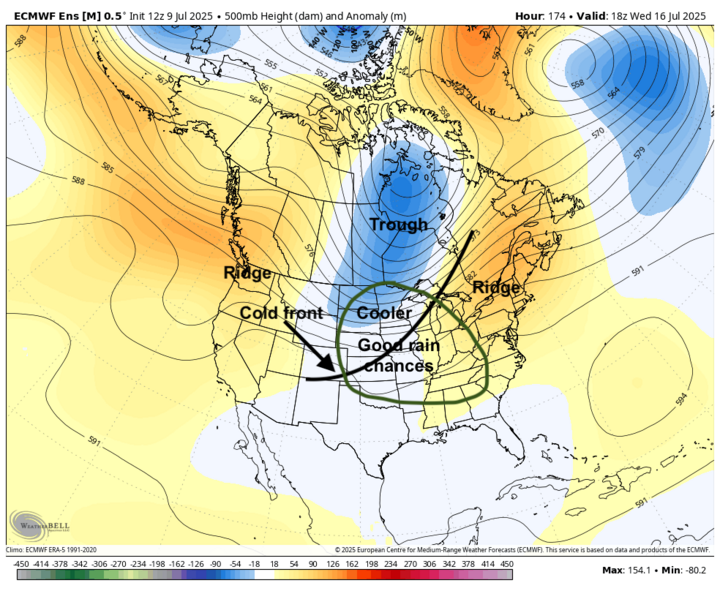
A slower-moving front also complicates the precipitation forecast. It's possible that one round of showers and thunderstorms could work through much of the northern part of the state on Tuesday night, with another round focused between Highways 30 and 36 on Wednesday afternoon into Wednesday night. Regardless, this could be a favorable scenario for some places to pick up over 2 inches of rain during the middle portion of next week. Recommend checking back on Monday as details should be clearer by then.
Temperatures should be seasonally cool statewide by Thursday, July 17, with highs likely not getting out of the 70s for most. Low temperatures should easily dip into the 50s across the northern half of the state on Thursday morning and may drop that cool everywhere if the front is a little more expedient. Temperatures look to remain pleasant between 80-84°F on Friday, July 18 in eastern and central sections of the state, while a return to the upper 80s looks likely in the Panhandle. Saturday, July 19 will feature more seasonal temperatures across the state with highs from the mid-80s to lower 90s likely.
Favorable Pollination Period
A look a little deeper into the crystal ball via the ECMWF AI model shows a chance for another shot of moisture and cooler temperatures coming around Monday, July 21. The CPC shows no real signal on precipitation but favors cooler than average across the main corn/soybean producing region of the U.S. in the eight- to 14-day outlook. If the pattern remains active like this for the next few weeks, it is probable that most of the prime corn/soybean area in Nebraska, the 'I' states, and Minnesota will be going through the pollination period of corn and early soybean pod-setting stages with favorable weather. The periodic shots of cooler air with occasional drops in humidity with northerly surface flow may be beneficial for limiting some disease spread.
Crop condition ratings for corn and soybean came in strong for Nebraska in the latest Crop Progress Report and generally very good across the Corn Belt, with only pockets of northern Illinois experiencing drought issues. If central and northern Illinois gets the rain it needs in the next week, which is probable, then we may be setting ourselves on a path toward a record corn and soybean crop. Long way to go and August could still bring trouble. But at this point, barring a catastrophically bad August, I see no reason to think that there are going to be significant declines in total crop production compared to last year.
